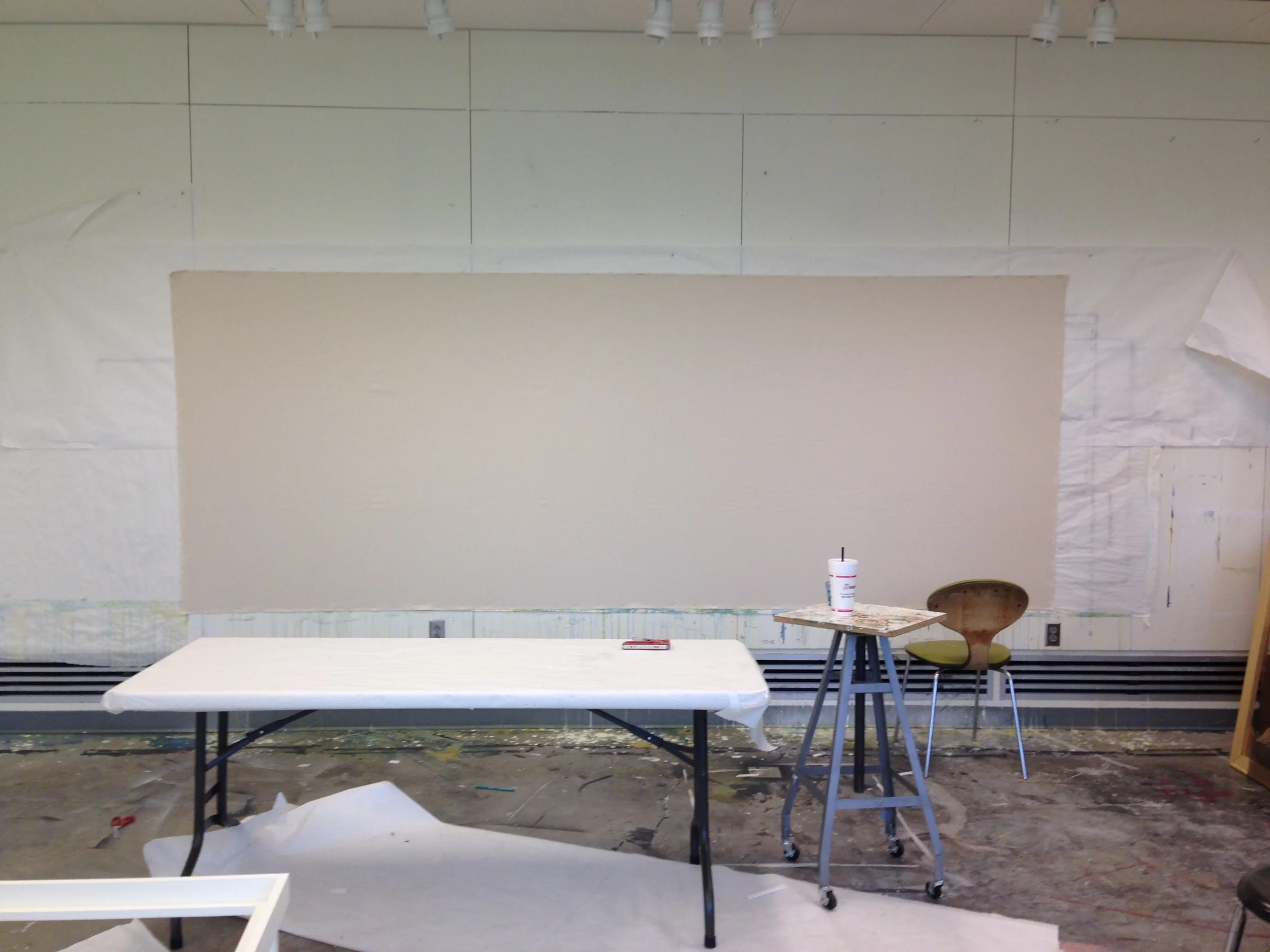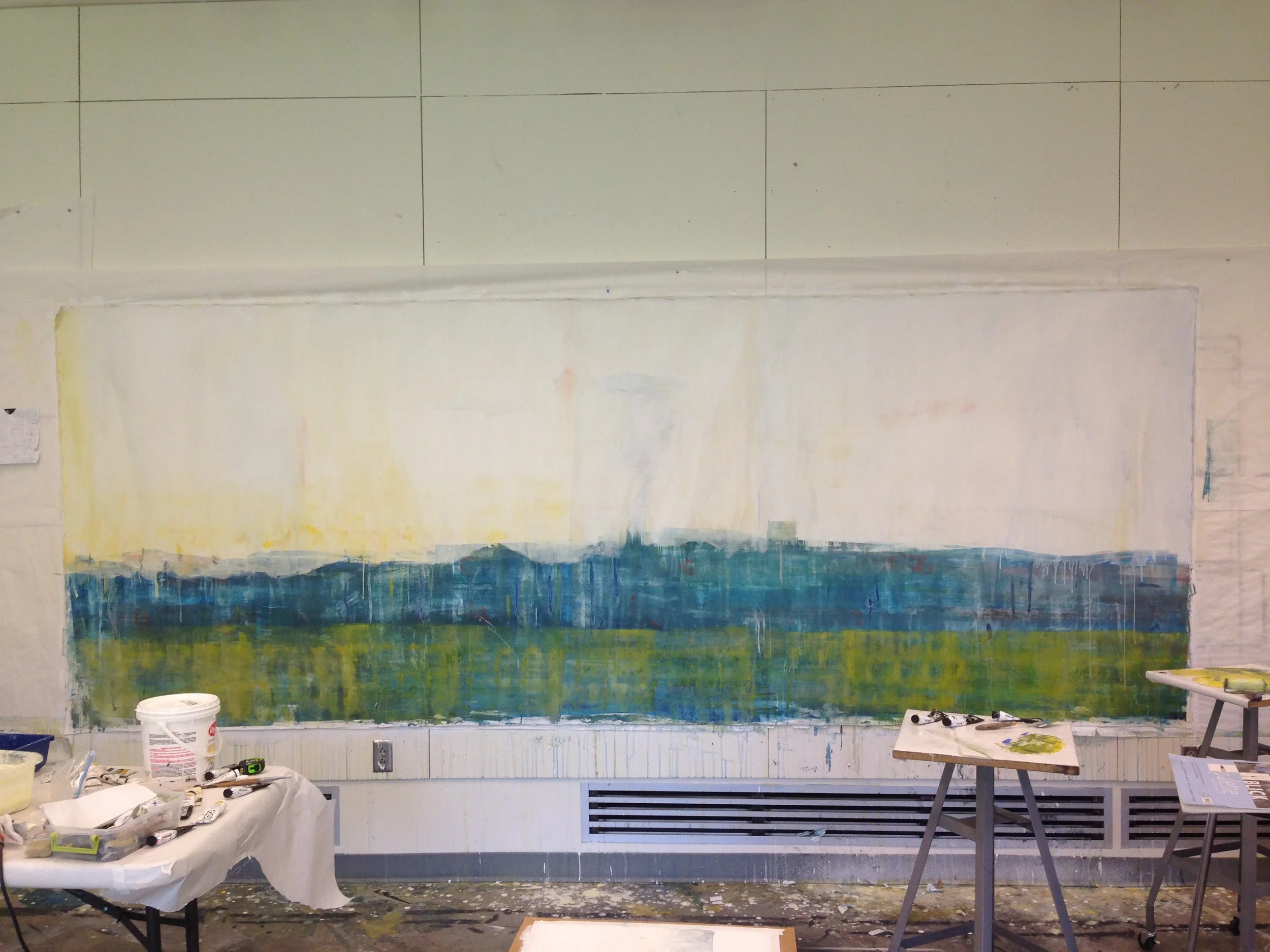A few days after my senior show went up, I got an email from someone I didn't recognize. She had seen the show, she really loved my Veil II painting, and wanted to commission a similar piece. Normally, I approach a request like this one with low expectations. Paradoxical as it may seem, people trying to commission art often don't understand what they want. Commissioned work has an unnecessary mystique to it that leads people astray. A piece that has been made for someone seems like it is special. It sounds more personal and more meaningful to someone who's trying to decorate.
But really, a commission changes the dynamic of a piece of art altogether. Suddenly, the work has a specific audience. Some person(s) will be living with and considering the work, with some degree of exclusivity. The work may even have a new author or viewpoint, depending on the motive or observations of the person who wants this piece. This changes how the artist approaches his or her craft.
Don't misunderstand me: I love commissions. That's how we got all of our great art up until a hundred or so years ago. The point of this detour is that commissions are a different vision of art altogether, and require a healthy understanding of artist and patron. As I began to discuss the piece with Julie and her husband Chris (my patrons), over the following weeks, I realized they were excellent patrons.
Julie and Chris are building a house out in Steele's, Virginia, with one of the most beautiful views I've ever seen. Here's the view out of the living room:
I could hear the mountains sing every time I drove out to their house. It's my dream home. It was still under construction at this point. Below, you can see what will be the view from their living room. They were looking to decorate the wall on the right. As we talked, we realized that any piece of art there would be fighting a losing battle for attention with the sprawling Blue Ridge. We decided it would be fitting if I could do one of my long Veil paintings with a horizon line that matched those mountains. I wanted to paint a tribute, a kind of meditation on those mountains.
With that general idea of a horizon line, I began working. I took several trips to the house to make sketches and try out different colors. Next, I set up my canvas. We settled on 3' x 12' as an appropriate size for the dimensions of the wall. My canvas was bigger, since this was going to be stretched. Here it was, stapled to the wall, before I'd touched it with a brush.
...Turns out a canvas that large is pretty daunting. Since this was a special project for me, I thought it would be a good idea to have a second canvas that I could test out colors on. So, in my studio, I set up another massive canvas, this one about 8 feet long. It became like a giant sketchpad for me:
And I began working.
I was testing out an ink brayer as a way to apply paint. I do a lot of my marks with a brayer (or roller) when I work on paper, but canvas has a rough texture that makes brayers harder to use.
At this point, I was only using acrylic paint. I tested out different techniques with a brayer, brushes, and eventually a squeegee.
With a sense of the colors and textures I wanted, I felt confident enough to go back to the real canvas. Every now and then I returned to the smaller one, if I wanted to try a certain layering of colors or a brayer technique. On the large canvas, below, I used the colors and forms I had played with.
I made layer upon layer of paint washes and textures, bringing the mountains in and out of focus. The picture below is one of the last ones I have before I decided to stretch it.
I ordered 12' stretchers and cross bars online - that's the biggest you can order from major art supply retailers. Any longer, and you have to get your stretchers custom-built. I built the stretcher frame myself. Next, I had to stretch the canvas over it. On my own, the whole process took about 6 hours. Below, you can see the frame and the canvas laying face down, about to be stretched.
After several bloody knuckles and fingers that wouldn't grip, I was tightly stretched. After that, I did a layer of varnish and then left it to dry. Here's a good look before it was hung.
Below are the final pictures of the installed work. Many thanks to Bailey Russell for taking these.
Blue Ridge, Acrylic on Canvas, 3' x 12'.
Blue Ridge, Acrylic on Canvas, 3' x 12'.
Blue Ridge, Acrylic on Canvas, 3' x 12'.
Blue Ridge, Acrylic on Canvas, 3' x 12'.











